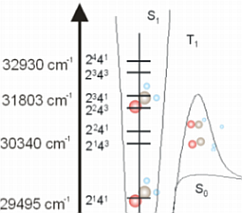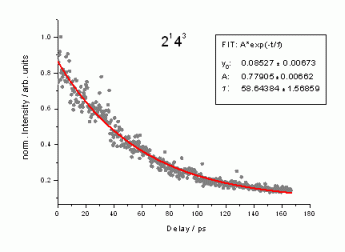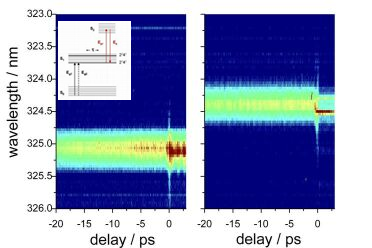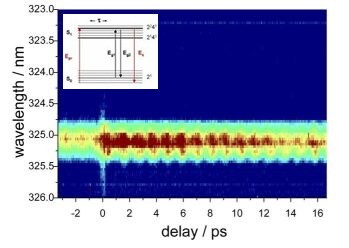Femtosecond dynamics of Formaldehyde |
 |
The photochemistry of formaldehyde has been studied in great detail over many years. The competing multiple dissociation channels from the 1A1 electronic potential energy surface have been a matter of interest and attained new attention through the recent proposition of a new pathway towards the molecular H2 and CO products [1]. We apply a UV fs two color transient grating (TG) method to explore the electronic ground and excited state of formaldehyde [2].
[1] D.Townsend, S. A. Lahankar, S. K.Lee, S. D. Chambreau, A. G. Suits, X. Zhang, J. Rheinecker, L. B. Harding, J.M. Bowman,
Science , 306, 1158-1161 (2004).
[2] A.M. Walser, M. Meisinger, P.P. Radi, T. Gerber and G. Knopp, (in preparation)
 |
 |
Figure: Potential Energy Surface of H2CO at the dissociation threshold. The population decay in the 2143 state, observed by the resonant transient grating method is mainly due to collisional relaxation.
Molecular dynamics in the S1 state of H2CO has been observed by the frequency dispersed fs-transient grating method. Different delays (see diagrams) between the incoming laser fields give raise to different contributions to the induced polarization and the measured signals reflect different molecular dynamics.
 |
 |
Figure: Dispersed resonant transient grating signals from H2CO. The selection of specific molecular resonances and the change of the temporal order of interacting laser light pulses (positive and negative time delays) enables the observation of different molecular dynamics.